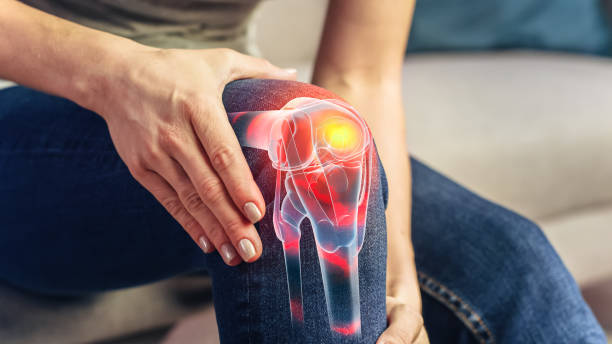Top Tips for Strong, Healthy Joints at Any Age Naturally
Joint health plays a crucial role in your ability to move freely, stay active, and live independently. Whether you’re an athlete pushing physical limits, a senior aiming to maintain mobility, or simply someone who wants to enjoy life without stiffness or discomfort, joint care should be a lifelong priority.
Joints are not just passive connectors between bones. They are complex structures composed of cartilage, ligaments, tendons, synovial fluid, and bone, working together to allow fluid movement and absorb impact. When joints are healthy, you move easily without pain. But when joints become damaged due to injury, inflammation, or age-related degeneration, they can limit mobility and significantly reduce quality of life.
Joint-related issues such as osteoarthritis, rheumatoid arthritis, bursitis, and other inflammatory conditions affect millions of people globally. And as life expectancy increases, so does the importance of joint health in sustaining an active, pain-free lifestyle well into older age.

What Are Joints and Why Are They Important?
Joints are the anatomical points where two or more bones meet. They are designed to provide structure, bear weight, and allow a wide range of motion. The human body has several types of joints, each with unique functions:
Hinge joints (like the elbows and knees) enable flexion and extension.
Ball-and-socket joints (like the shoulders and hips) allow rotation and movement in multiple directions.
Pivot joints (like those in the neck) enable turning from side to side.
Each joint contains:
Cartilage, which cushions the bones and reduces friction.
Ligaments, which connect bones and provide stability.
Tendons, which attach muscles to bones and aid in movement.
Synovial fluid, a lubricant that nourishes cartilage and ensures smooth joint motion.
Over time, any part of this system can be affected by wear, overuse, injury, or disease—making preventive care essential.
Common Causes of Joint Problems
1. Aging
With age, the production of synovial fluid decreases, and cartilage thins out. This leads to less shock absorption and increased friction, which can result in joint pain and stiffness.
2. Injury or Overuse
Joint injuries like sprains, fractures, or ligament tears can lead to long-term complications, especially if improperly treated. Repetitive stress or overuse from sports or manual labor can also wear down cartilage over time.
3. Obesity
Carrying excess weight places enormous stress on weight-bearing joints, such as the knees and hips. This not only accelerates cartilage breakdown but also contributes to inflammation in joint tissues.
4. Poor Posture and Body Mechanics
Slouching, improper lifting, and sitting for prolonged periods put abnormal stress on joints, particularly in the spine and shoulders.
5. Inflammatory Diseases
Autoimmune conditions like rheumatoid arthritis attack joint linings, causing swelling, pain, and joint destruction. Other conditions like gout cause acute, painful inflammation due to crystal buildup.
Natural Ways to Improve and Protect Joint Health
Fortunately, numerous simple and natural strategies can help you support and preserve joint function.
1. Maintain a Healthy Weight
Losing even a small amount of weight can significantly reduce pressure on the knees and hips. Research suggests that every pound lost removes about four pounds of pressure from the knees.
2. Stay Active and Mobile
Movement helps stimulate synovial fluid production and strengthens muscles that support joints. Aim for:
30 minutes of low-impact exercise most days of the week
Activities like walking, swimming, water aerobics, and yoga
3. Build Strength
Resistance exercises enhance joint stability by building muscle. Strengthening your quads, hamstrings, glutes, and core can help protect your hips, knees, and lower back from strain.
4. Flexibility and Stretching
Tight muscles can pull on joints, causing misalignment and pain. Incorporate dynamic stretching before workouts and static stretches after exercise.
5. Adopt a Joint-Healthy Diet
Eating a variety of nutrient-rich foods can reduce inflammation and provide the building blocks needed for joint repair.
Joint-Friendly Superfoods:
Fatty fish (salmon, sardines): Omega-3s reduce inflammation.
Leafy greens (spinach, kale): Rich in vitamin K and antioxidants.
Berries (blueberries, raspberries): Packed with polyphenols that protect cartilage.
Olive oil: Contains oleocanthal, an anti-inflammatory compound.
Nuts and seeds: Provide essential fatty acids and magnesium.
6. Drink More Water
Hydration helps maintain the volume and quality of synovial fluid, the lubricant that reduces joint friction. Dehydration can worsen stiffness and inflammation.
7. Take Targeted Supplements
Some people benefit from natural supplements that support joint structure and reduce discomfort:
Glucosamine & Chondroitin: Help regenerate cartilage and reduce symptoms in osteoarthritis.
Omega-3 Fatty Acids: Found in fish oil, reduce joint stiffness and swelling.
Curcumin: The active ingredient in turmeric, a powerful anti-inflammatory.
Vitamin D & Calcium: Support bone density and joint integrity.
8. Avoid High-Impact and Improper Movements
Running on hard surfaces or lifting heavy weights with poor form can damage joints. Instead, focus on joint-safe exercises and proper biomechanics.
Best Foods for Joint Health (Expanded Table)
| Food Group | Examples | Joint Benefits |
|---|---|---|
| Omega-3 Rich | Salmon, mackerel, chia seeds | Fights inflammation and lubricates joints |
| Antioxidant-Rich | Blueberries, broccoli, green tea | Reduces oxidative stress on cartilage |
| Bone Support | Dairy, almonds, tofu, leafy greens | Provides calcium and vitamin D |
| Protein | Chicken, lentils, Greek yogurt | Repairs tissues and builds joint-supporting muscle |
| Hydrating Foods | Watermelon, cucumber, celery | Enhances synovial fluid production |
| Anti-Inflammatory | Turmeric, ginger, garlic | Lowers chronic inflammation in joints |
Habits That Harm Joint Health
Avoid these common joint-damaging habits:
Sitting Too Long – Reduces circulation and increases stiffness.
Wearing Poor Footwear – Lack of support can misalign knees and hips.
Ignoring Symptoms – Pushing through joint pain can cause irreversible damage.
Smoking – Reduces oxygen supply to joint tissues and weakens bone health.
When to See a Doctor
Joint discomfort can often be managed with lifestyle changes, but medical evaluation is necessary if you experience:
Joint swelling that persists for more than 3 days
Inability to move the joint or bear weight
Signs of infection (fever, warmth, redness)
Sudden locking or giving way of a joint
Early treatment can prevent progression and preserve function.

Preventing Joint Pain in the Workplace
Whether you’re at a desk or on your feet all day, ergonomic adjustments are essential:
Choose a supportive chair with adjustable height and lumbar support
Use a standing desk or take standing breaks every 30 minutes
Position your screen at eye level to avoid neck strain
Use a wrist rest if you type for long hours
Wear supportive shoes with cushioning soles
Integrating Joint Care Into Everyday Life
Caring for your joints doesn’t have to be time-consuming. A few small changes can make a big impact:
Morning Routine:
5–10 minutes of yoga or light stretching
Hydrate with warm lemon water
Afternoon:
Choose an anti-inflammatory lunch
Take a walk during your break
Practice good posture while sitting
Evening:
Use a foam roller or take an Epsom salt bath
Sip herbal tea with turmeric or ginger
Wind down with gentle stretches
FAQs About Joint Health
1. What is the best exercise for joint pain?
Low-impact exercises like swimming, yoga, and walking build strength and flexibility without stressing joints.
2. Can diet really improve joint health?
Yes. A balanced, anti-inflammatory diet can support joint repair and reduce stiffness and pain.
3. What vitamins are essential for joint health?
Key nutrients include vitamin D, calcium, vitamin C, and omega-3 fatty acids for inflammation control and tissue repair.
4. How do I know if my joint pain is serious?
If the pain is persistent, severe, or limiting your movement, consult a doctor for evaluation.
5. Are joint supplements safe?
Generally yes, but consult your healthcare provider before starting any supplement, especially if you’re on medications or have chronic conditions.
Conclusion
Joint health is the foundation of a mobile, pain-free life. By adopting healthy habits, eating nutrient-rich foods, staying active, and avoiding joint-harming behaviors, you can protect your joints for the long haul.
Whether you’re young and active or navigating the challenges of aging, remember: your joints are for life—take care of them now, and they’ll take care of you later.
